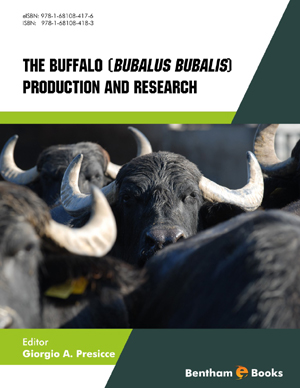Abstract
Buffalo maintain thermal balance by physiological and behavioural processes. During heat stress, on exposure to direct solar radiation or during work, buffaloes exhibit signs of distress. Under extreme hot dry or hot-humid environmental conditions ability of buffaloes to regulate temperature is compromised, and body heat balance that is dissipated at later stage or during cool periods by heat exchange processes, is increased. The responses of body functions under either acute or short term heat are discussed in relation to the initiation of panting by thermal stimulation of peripheral receptors and to the control of respiratory activity by deep body temperature. During heat exposure, an increase in water turnover reflects adaptation to maintain fluids for evaporative cooling. Acute exposure or short term exposure to heat evokes several responses of plasma volume and its composition, including changes in potassium metabolism. Acute heat exposure gives rise to a change in renal hemodynamics and electrolytes excretion. Changes in renal electrolyte excretion during heat stress are discussed in relation to the alteration of hormonal level and to the acidbase status of the blood. The effect of heat exposure on various other reactions is also summarized in thyroid activity, the levels of hormones in the pituitary and adrenal glands.
Keywords: Buffaloes, Heat exchange, Responses of body functions, Thermoregulation






















